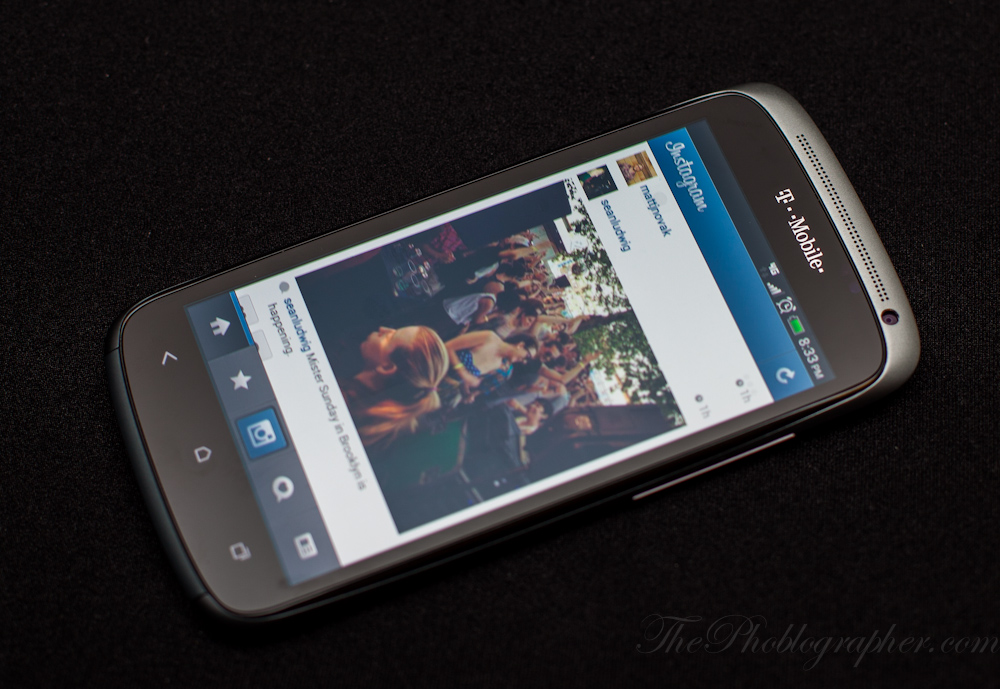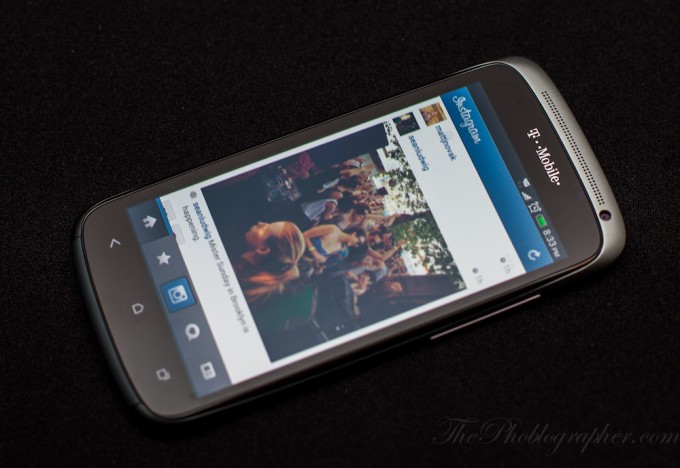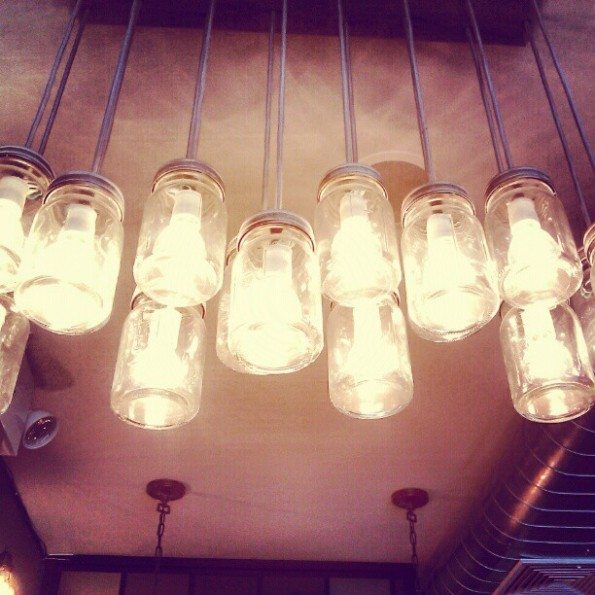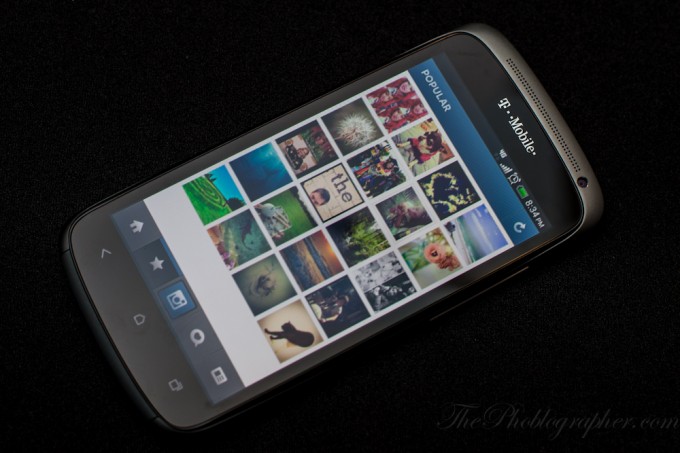When it was launched for Android devices, Instagram grew immensely. Though the app didn’t have all the functionality of the iPhone app out of the box, it did indeed receive updates to make it more on par with its iOS version. The app is still very popular on the Google play store and can keep a photographer creative and spontaneous.
There is a very good reason why Facebook paid a hefty sum of money for Instagram
Capabilities
Being designed for mobile photography, Instagram allows users to apply various fun filters to their photos. While the general masses say that they all look very vintage like, we beg to differ. Some of them look vintage, but those who actually still shoot film will understand that some of the photos actually look like modern day chrome film and other various renderings like cross-processing and other C-41 darkroom magic.
The process starts by booting up the app and then choosing to either take a photo or use one from your phone’s current gallery. Then, your camera will be activated and you will be able to take the photo. Depending on what phone you have, you may be able to crop the image afterward or it may take the photo just as is and therefore shoot it in Instagram’s iconic square format. On an iPhone and on my older My Touch Slide, I was able to crop my image. On my brand new HTC One S, I don’t have that ability. To disable it, I had to go into the settings and uncheck, “Activate Instagram’s Advanced Camera.”
To be quite honest, I really hated the advanced camera feature.
After this, you can start applying filters. Instagram for Android comes out of the box with loads of filters, but my co-workers, who have iPhones, currently have more filters.
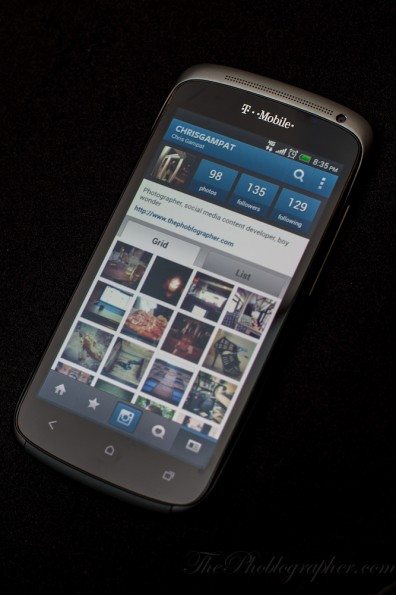 In the same interface, users have the option of adding a border to their image. The border changes with each filter type and some don’t even offer borders.
In the same interface, users have the option of adding a border to their image. The border changes with each filter type and some don’t even offer borders.
HDR
Then comes the HDR functionality. As in real-life, I’ve often found the HDR renderings to be quite terrible. HDR should only be done by certain people, like Trey Ratcliff.
For iPhone users, it can be quite a great feature because the control over their camera settings are so limited. For an Android user like myself, I beg to differ. I’ve often been able to do exposure compensations and use my flash with no problems at all. An example of a situation that I’m talking about is when a subject is strongly backlit (such as against a cityscape) and you want both the cityscape and the subject to be fairly well exposed.
With my HTC One S, I can underexpose the scene and get the details in the cityscape back but then underexpose my subject in the process. Afterward, I can fire a flash at my subject and provide enough fill to make the image look decent enough.
Just like in photography with traditional cameras, one can surely get excellent results.
Tilt Shift
Android users were also not able to use the Tilt-Shift setting at launch, but it has come to us and we can now use it. However, don’t think that it can take the place of a real camera’s abilities at all. Indeed, even just being able to shoot a photo wide open can blow away Instagram’s capabilities.
Here’s a photo from my Instagram (you can check me out @chrisgampat). I placed the focusing on the beer and really fine tuned it using my fingers to only have the beer in focus. It was quite a challenge, but a fun one at that.
Here is nearly the same photo from a Leica X2 shot wide open. Clearly, there is no comparison here.
While we’re probably being a bit critical of Instagram here, the point of the app in the first place is to take images from otherwise second rate camera sensors with poor-quality plastic optics and embrace their flaws to make them look beautiful.
That is indeed what it does, and Instagram does it quite well. Besides processing images though, there is a whole social network behind Instagram that allows users to have integration with apps like Tumblr, FourSquare, Twitter and Facebook. The user can also caption their image in the same tab. Indeed, go through any photographer’s news feed and they will probably be bombarded by images from Instagram users.
Users can then comment or like one anothers’ photos. Plus, there is a Popular section, different types of news feeds, interaction section, and your own profile.
Performance
I’ve honestly never had Instagram crash on me despite how hard their servers probably get pounded every day. It’s nice to know that there is always steady performance. I’ve had Instagram not be able to upload an image before, but then you simply click on the retry button and it works like a charm.
Unfortunately, I really wish that Instagram had their own website where come can view images. Instead, it much smarter to use Extragr.am.
Image Samples
Conclusions
Instagram is an extremely interesting and fun app to use. If you embrace the freedom and instant gratification that mobile photography allows you plus love to have fun if you don’t take it very seriously, then you’ll thoroughly enjoy Instagram. As it stands, I know of only one or two people who have deleted it from their phones and that is only for the reason that Facebook bought them.
In the end, Instagram wins our full approval and we encourage you to head to the Google Play Store and download it now.
Please Support The Phoblographer
We love to bring you guys the latest and greatest news and gear related stuff. However, we can’t keep doing that unless we have your continued support. If you would like to purchase any of the items mentioned, please do so by clicking our links first and then purchasing the items as we then get a small portion of the sale to help run the website.


